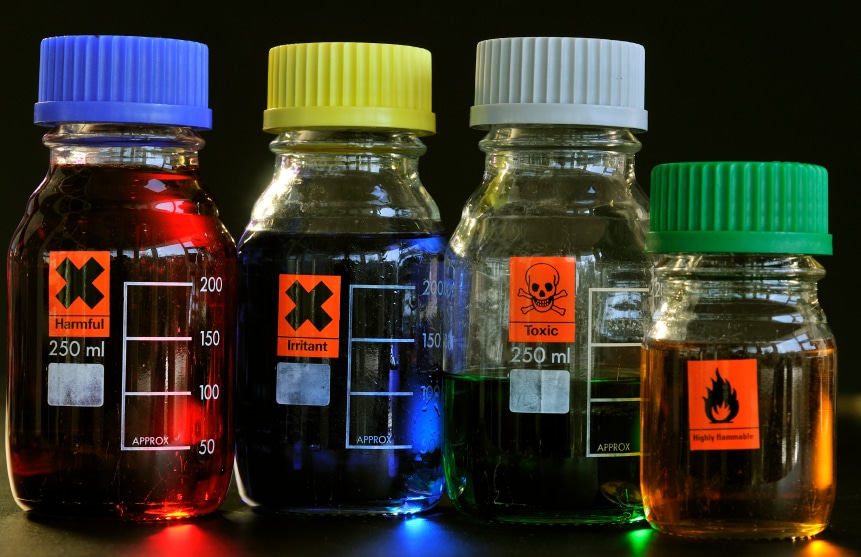PPE, Laboratory Equipment, Lab Safety
Toxic Laboratory Chemicals
10 toxic laboratory chemicals and what they do to you:
| Acetonitrile Flammable irritant that converts to cyanide once inhaled, ingested, or absorbed through the skin. |
|
| Chloroform Volatile solvent can irritate the skin, eyes, and lungs. It also acts as an anesthetic that depresses the central nervous system. |
|
| Dimethyl Sulfoxide (DMSO) An excellent solvent that can cross healthy, intact skin. |
|
| Formaldehyde Common fixative that causes dermatitis, sinusitis, and asthma. |
|
| 2-Mercaptoethanol A combustible corrosive that can harm the skin and the mucous membranes. |
|
| Methanol Transforms to formic acid once inside the body and may cause metabolic acidosis and blinding retinal toxicity. |
|
| Sodium Azide Extremely toxic skin irritant that can cause headaches, dangerously low blood pressure, and even heart failure. |
|
| Sodium Hydroxide Strong bases like sodium hydroxide saponify fatty acids and destroy cell membranes. |
|
| Sodium Hypochlorite Causes allergic contact dermatitis. |
|
| Tetrahydrofuran (THF) A flammable solvent that produces shock-sensitive, explosive peroxides over time. |
Even the most common laboratory chemical can still do you harm. Do not put your safety at risk. Contact GMI for solutions.


